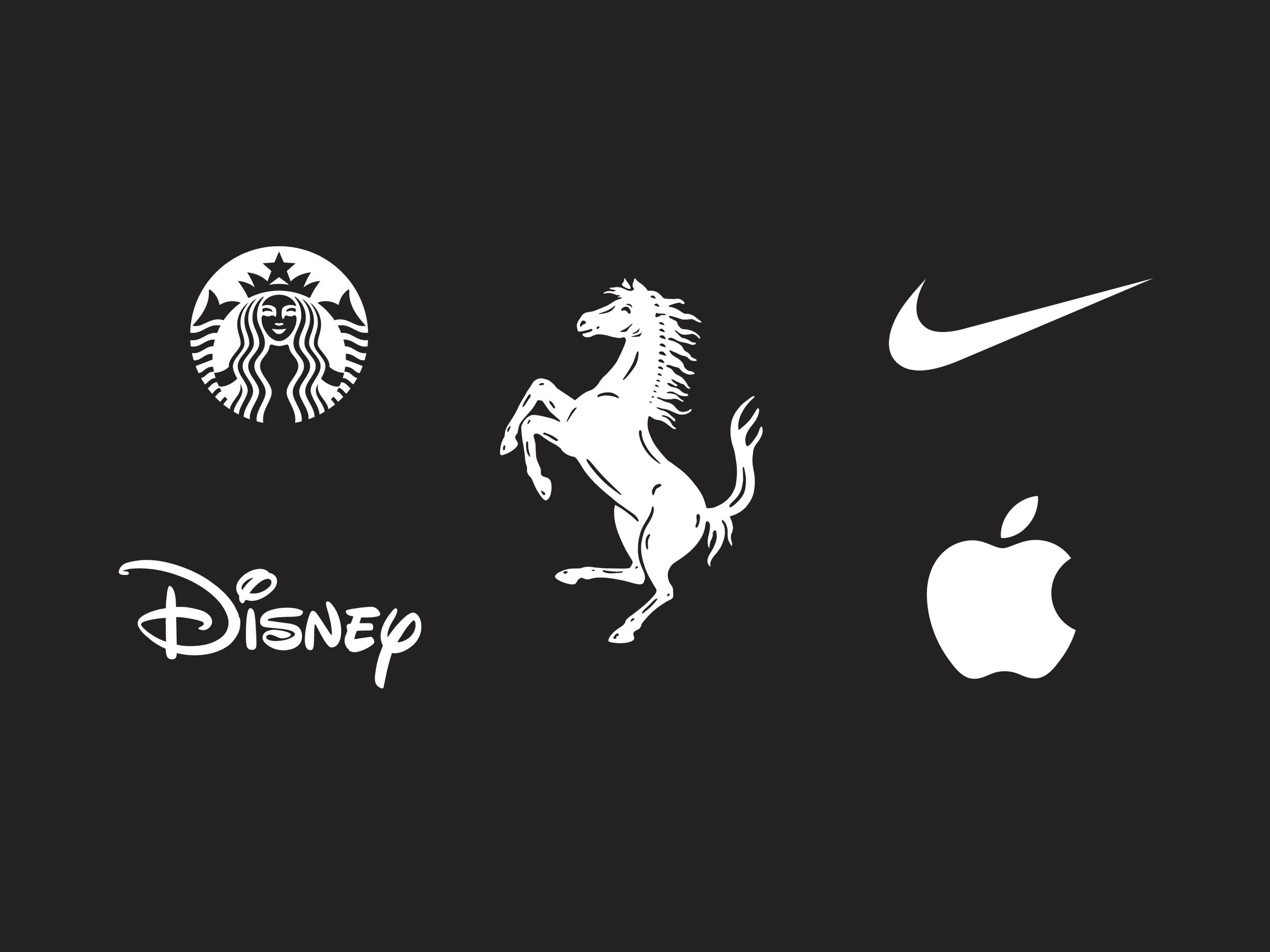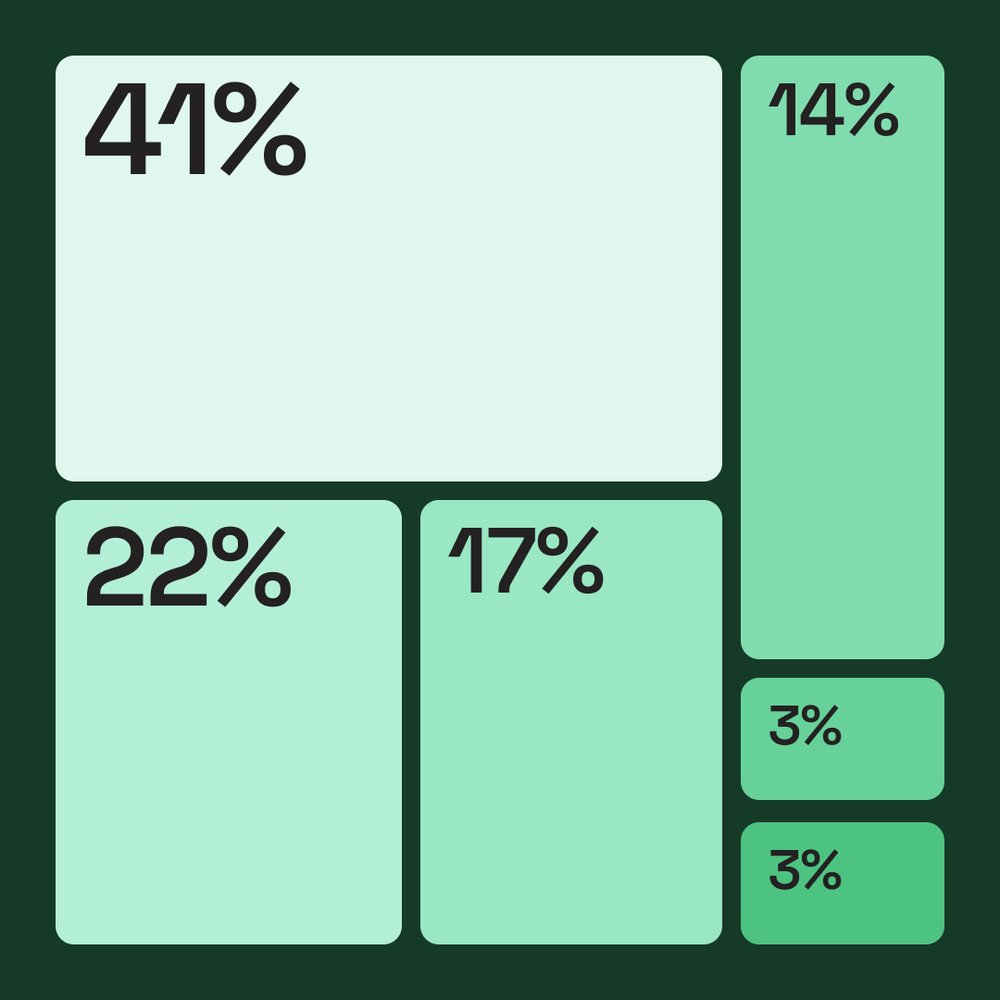Logos?
Handelsmarken, Symbole, Firmenzeichen, Marken, Bildmarken, Embleme, Abzeichen, Warenzeichen, Piktogramme, Motive, Wappen, Markenzeichen – die Liste an verwandten Begriffen ist lang.
Was macht ein gutes Logo aus?
Zunächst eine kurze Anmerkung zum Thema Firmensignets: Da wir uns in diesem Artikel auf Logos konzentrieren möchten und ein Firmenschriftzug auch dann nicht zum Logo zählt, wenn die Schrift eigens entwickelt wurde, werden Signets im Folgenden nicht berücksichtigt.
Ob das Logo einer bekannten Marke wohl je der Ursprung ihres Erfolgs war? Die Antwort lautet: Nein, eher nicht. Während ein gutes Logo sicherlich eine wichtige Rolle spielt, hat ein Logo alleine bisher nicht ausgereicht, um einer Marke oder einem Produkt zum Erfolg zu verhelfen.
Dennoch ist ein wohl durchdachtes und ansprechendes Markenzeichen wichtig und es gibt einige Voraussetzungen, die zu erfüllen sind, um aus einem guten Logo ein hervorragendes zu machen.
1. Die Wirkung: Ein einzigartiges Logo ist eines, das den Kern des Produkts widerspiegelt. Dabei reicht es nicht aus, ein bestimmtes Gefühl hervorzurufen – ein erstklassiges Design vermittelt sowohl Inhalt als auch Emotionen.
2. Schlichte Eleganz: Das Design sollte einen hohen Wiedererkennungswert haben und auf den ersten Blick erkannt werden.
3. Farben und ihre Wirkung: Da unterschiedliche Farben unterschiedliche Emotionen wecken, solltet ihr das Design eures Logos auch von euren Markenfarben abhängig machen. Für ein innovatives, effektives Design ist wichtig, dass die Grundsätze der Farbpsychologie eingehalten werden.
4. Form, Verlauf und Ausgewogenheit: Dies sind die drei wichtigsten Elemente. Ein gutes Logo muss gleichzeitig ansprechend sein und ins Auge stechen. Es muss die gewünschte Botschaft und Emotion auf den ersten Blick vermitteln und visuell ausgewogen wirken.
Hier eine Auswahl der aus unserer Sicht besten Logos aller Zeiten – in zufälliger Reihenfolge.
Nike

Ein kurzer Blick auf das Logo von Nike – und schon spürt man förmlich seine Energie und Dynamik. Seitlich auf dem Sportschuh platziert, schiebt das kraftvolle Symbol den Fuß geradezu vorwärts.
Weder Adidas noch Puma können mit dieser Dynamik mithalten. Anfangs gehörte zum Logo von Nike auch ein Slogan in einer eigens entwickelten Schrift, ähnlich der Futura Condensed Extra Black. Heute steht das Symbol, der sogenannte Swoosh, allein und wird weltweit auf den ersten Blick erkannt.
Die Entstehungsgeschichte des bekanntesten Sportlogos ist zwar nicht weiter spektakulär, aber nichtsdestotrotz eine interessante Lektüre. Carolyn Davidson, zu diesem Zeitpunkt Studentin an der Portland State University, entwarf das Logo zusammen mit verschiedenen Alternativen als freie Mitarbeiterin für das Unternehmen, damals noch Blue Ribbon Sports Inc. Als das Unternehmen dann 1971 nach der griechischen Siegesgöttin in Nike Inc. umbenannt wurde, entschied man sich für den Swoosh als neues offizielles Logo.
Apple

Wie sind Steve Jobs und Steve Wozniak wohl auf den Namen Apple gekommen? Haben sie sich, gebeugt über das, was später einmal ein Computer werden sollte, darüber unterhalten? Fragte einer: *„Was hältst du von Apple?"* und erwiderte der andere: *„Warum nicht?"*
Das Logo wurde von Designer Rob Janoff entworfen, den Steve Jobs persönlich kannte und daher um einen Entwurf bat. Janoff zufolge lautete der Auftrag damals lediglich: „Wir werden das Unternehmen Apple nennen.“ Er hatte also freie Hand.
Janoff wählte statt eines ganzen Apfels einen angebissenen, damit das Logo auch in kleiner Größe nicht mit einer Kirsche verwechselt werden konnte.
Mit Alan Turings Biss in einen vergifteten Apfel oder der Bibelgeschichte von Adam und Eva hatte seine Entscheidung also entgegen all der Mythen nichts zu tun.
Während die Farbe des anfangs in Regenbogenfarben gehaltenen Logos über die Jahre hinweg immer wieder geändert wurde, blieb die Form immer gleich. Für ein Unternehmen namens Apple gäbe es wohl kaum ein passenderes Logo. Es schreit ja förmlich „Apple“. Auch bei der Benennung des ersten Computers blieb man dem Apfelthema treu und nannte ihn „Macintosh“, in Anlehnung an die Apfelsorte McIntosh.
Um das Apfel-Logo und den Namen „Apple“ gab es einen jahrelangen Rechtsstreit zwischen den Beatles und Apple. Die Beatles hatten geklagt, auch wenn das Logo ihrer Plattenfirma Apple Corp, eine realistische Abbildung eines knackigen grünen Apfels, dem stilisierten Apfel im Logo von Apple nicht wirklich ähnlich sah. Der in den 1980er-Jahren begonnene Streit flammte über die Jahre hinweg immer wieder auf und wurde erst Jahrzehnte später beigelegt.
FedEx

FedEx ist ein hervorragendes Beispiel für die effektive Nutzung des Negativraums. Seht ihr den Pfeil zwischen dem „E“ und dem „x“? Dieser Schriftzug ist tatsächlich mehr als „nur“ eine Wortmarke. Um den gewünschten Effekt zu erzielen, hat Designer Lindon Leader die zwei Schriftarten Univers Bold und Futura Bold auf äußerst kluge Weise kombiniert und abgeändert.
Lindon Leader schildert die Entstehung des Logos wie folgt:
„Als ich mit dem Abstand zwischen den Buchstaben spielte und plötzlich ein weißer Pfeil zwischen dem ‚E‘ und dem ‚x‘ erkennbar wurde, gefiel mir das auf Anhieb. Ich habe zuerst mit der einen, dann mit der anderen Schrift experimentiert, aber in beiden Fällen hätte ich die Schrift zu sehr verzerren müssen, um einen schönen Pfeil zu erhalten. Also fragte ich mich, ob man sich wohl die jeweils besten Eigenschaften der beiden Schriften herauspicken könnte. Ich kombinierte das hohe ‚x‘ von Univers mit Grundstrichen in Futura Bold und erreichte so, dass der Querstrich des kleingeschriebenen ‚e‘ mit dem ‚x‘ auf einer Linie lag. Dann feilte ich so lange an den Schriften herum, bis der Pfeil natürlich wirkte und ich nebenbei auch eine neue Buchstabenform geschaffen hatte.“
Gründer Frederick W. Smith soll einmal gesagt haben, einen FedEx Transporter müsse man aus *„einer Entfernung von fünf Häuserblöcken”* erkennen können – und daran hat sich Leader offensichtlich gehalten.
Coca-Cola

Woran erkennt man eine Flasche Cola? An der ansprechenden, geschwungenen Schrift? Ein noch wichtigeres Markenzeichen ist tatsächlich die Flasche selbst. Seit sie Anfang des 20. Jahrhunderts erstmals patentiert wurde, gilt sie als ebenso wichtiges Markenzeichen wie der Schriftzug selbst.
Kaum eine andere Flasche liegt so gut in der Hand wie eine Colaflasche. Doch nicht nur die Flasche, auch der Schriftzug ist weltbekannt – und gemeinsam sind sie das perfekte Paar.
Under Armour

Under Armour ist eine vergleichsweise junge Sportmarke, die vor allem unter Athletinnen und Athleten sowie Sportbegeisterten bekannt ist. Die Marke wurde 1996 von Kevin Plank, damals noch Student, gegründet. Plank hat sich laut eigener Aussage deshalb für die britische Schreibweise „armour“ – statt der US-amerikanischen „armor“ – entschieden, weil er die dafür verfügbare Kurzwahlnummer für ansprechender hielt.
Mit Armen in Siegespose und breitbeinigem Stand vermittelt das Logo von Under Armour auf den ersten Blick ein Bild von Stärke und Sportlichkeit. Bei genauerem Hinsehen erkennt man dann die Buchstaben „U“ und „A“ im Logo, die man, einmal entdeckt, fortan immer sieht.
Der Marke ist es gelungen, ihre Kernwerte mit zwei simplen Buchstaben zum Ausdruck zu bringen – und ein exzellentes Logo zu gestalten, das durch schlichte Eleganz besticht.
Jaguar

Die zum Sprung ansetzende Großkatze ist der Inbegriff von Stärke, Geschwindigkeit und Flexibilität – alles Eigenschaften, die man sich in einem Auto wünscht. Der „Jag“, wie ihn seine Fans nennen, ist ein britisches Symbol für Prestige, Qualität und beispiellose Sportlichkeit. Verglichen mit den Logos anderer erfolgreicher Automarken, etwa Mercedes, Audi, Rolls Royce, Bentley oder Volkswagen, sprüht der springende Jaguar förmlich vor Kraft.
Das Unternehmen wurde 1922 von den zwei Motorradfans William Lyons und William Walmsley zunächst unter dem Namen „The Swallow Sidecar Company“ gegründet, der später mehrfach angepasst und 1945 in „Jaguar Cars Ltd.“ geändert wurde. Das Design der Jaguarskulptur geht auf den Illustrator Frederick Gordon Crosby zurück. Neben der Kühlerfigur trug der Jaguar außerdem ein Emblem mit dem Relief eines erhobenen Jaguarkopfs. In Printform wird der zum Sprung ansetzende Jaguar durch den Markennamen in einer auf der Algera-Schrift basierenden Schriftart ergänzt – einfach, elegant, britisch.
Während das Unternehmen mittlerweile aus Sicherheitsgründen auf die Kühlerfigur verzichtet, bleibt das Symbol weiterhin weltbekannt – bekannter noch als das Design der Automobile selbst.
Levi's

Das auf den Levi’s Jeans prangende Logo zeigt zwei Pferde, die versuchen, eine Jeans auseinanderzureißen. Besser ließe sich die außergewöhnliche Haltbarkeit dieser Jeans wohl kaum verdeutlichen.
Während sich zwar nicht mehr nachvollziehen lässt, wer dieses Logo vor mehr als 130 Jahren entworfen hat, wissen wir eines dagegen sicher: Es wurde bewusst so gewählt, dass auch Menschen, die des Lesens nicht mächtig waren, die Botschaft der Marke verstehen konnten. Für alle, die gerne mehr darüber erfahren möchten, lohnt sich ein Blick in die Geschichte dieses Emblems.
Weitere erstklassige Logos
Das fliegende Känguru der australischen Fluggesellschaft Qantas Airways, das Logo von Spielbergs Filmstudio DreamWorks, das einen Jungen zeigt, der angelnd in einer Mondsichel sitzt, und die Batman- und Superman-Logos – sie alle sind gute Beispiele für hervorragende Logos. Nicht zu vergessen das klassische, elegante und einprägsame Logo von Coco Chanel, das sie selbst entworfen hat, oder das Logo von Red Bull, vom Roten Kreuz oder Ralph Laurens Polo-Emblem. Leider fehlt uns der Platz, um all die vielen guten und großartigen Logos aufzulisten.
Die hier genannten Beispiele sind selbstverständlich nur eine exemplarische Auswahl.
Der Entwurf eures Logos ist erst der Anfang
Mit der Gestaltung eines Logos ist es nicht getan. Schließlich benötigt ihr auch Richtlinien – Markenrichtlinien, um genau zu sein – in denen geregelt ist, wie euer Logo verwendet werden soll.
Mit Frontify könnt ihr diese Richtlinien auf einer zentralen Plattform online für alle Beteiligten zugänglich machen – für optimale Zusammenarbeit, einen besseren Überblick und die einfache Verwaltung eures Designprozesses.
Überzeugt euch selbst und testet unsere Plattform kostenlos. Erstellt im Handumdrehen eure eigenen Richtlinien mit eurem Logo, in euren Markenfarben und nach euren individuellen Designkriterien. Ein gutes Logo braucht gute Richtlinien. Gerade in der ersten Entwicklungsphase, in der es viel zu besprechen und anzupassen gibt, machen euch die Kommentar-, Update- und Prüffunktionen von Frontify das Leben deutlich leichter.

